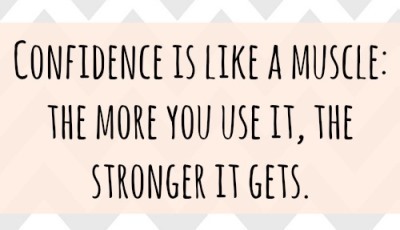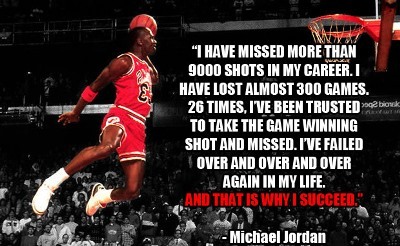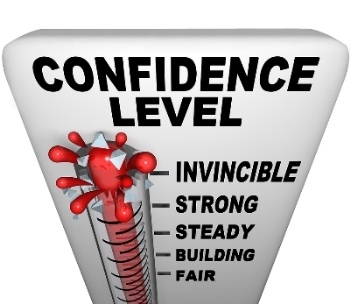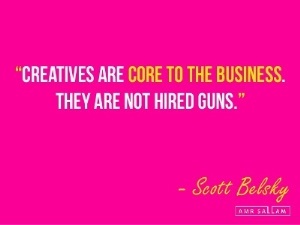Jeremie Averous's Blog, page 103
July 2, 2015
Three Unexpected Issues of the Collaborative Age
In a remarkable talk, Scott Belsky (Head of Behance, the leading online platform for creatives to showcase their creative work), shares some very interesting findings about the operation of the Collaborative Age’s internet.
careers would be more independent and distributed
people would be far more collaborative
opportunity would be increasingly determined by merit, creating a new meritocracy.
Practically, through the platform he founded, he found that meritocracy, innovation and access to opportunity are not natural on the web. In particular:
niche communities tend to be created which limit the ‘long tail effect’ and prevents encounter-driven creativity
the critical mass concept for rating work does not fully work, and a lot of creative work gets commoditized for a low price (e.g. logo creation)
there is a very widespread lack of attribution on the web, which limits the value of creative people’s portfolio and the leverage they can get from it.
It is not yet clear if these issues are structural issues of the Collaborative Age, or if they are transition issues as the Fourth Revolution unfolds.
Listen to his talk here:

June 30, 2015
Why Successful Entrepreneurs Must Be Masters at Risk Management
I know a very successful entrepreneur. He was highly praised locally as a success, and indeed the growth and reach increase of his business was impressive.
Upon careful observation, he was taking what much more risk than I would have ever considered to grow his business. This created substantial doubt for me – maybe I was too risk-adverse to succeed in my ventures? Are all entrepreneurs so highly risk-taking? Now, a few months later, the economy in that particular business is tough and he is close to losing everything. It’s tough on my side too, but thanks to a prudent management, I am confident my business will survive.
 The way to the top is littered with fatalities. And no-one remembers them.
The way to the top is littered with fatalities. And no-one remembers them.I do believe that real entrepreneurs are necessarily masters at risk management. They know how to take risks, and they also know how to manage them, and in any case make sure that the worst case does not mean losing everything and creating excessive strain in their personal and family life.
Successful entrepreneurs on the long term are prudent.
Failure, yes. But failure withing a managed risk framework. The winners are those who survive. After the event, nobody talks any more about those who died on the way. You can be a temporary sensation, have your minute, hour or even month of fame. It’s much tougher to have a sustainable success – and often we don’t see these entrepreneurs until they have become so successful that we can’t ignore them – but they tend to stay beyond the limelight.
Nobody remembers the fatalities on the Everest. We remember only the winners. Those who know how to take the right level of risk and were also lucky in a way. If you are an entrepreneur, be prudent!

June 27, 2015
What The Two Levels of Confidence Are
Following our previous post on ‘Why Showing Confidence is So Important‘, a key question for me is whether Confidence needs to be associated with a skill level of some sort, or can just be a general Confidence level.
 I thus think there are two levels of confidence, and the second is much harder to achieve that the first:
I thus think there are two levels of confidence, and the second is much harder to achieve that the first:
First level: confidence achieved through a high mastery of a particular skill. The confidence level stems from a demonstrable capability that is quite higher than most can achieve
Second level: general confidence level, irrespective of a skill level. It can stem from a general confidence about life and that things will always turn for the better, or other sources such a religion. In any case, it comes from a much deeper belief.
I find that not so many people can reach the second level of confidence and it generally takes practice and exercise. Exercise your confidence to be able to use it more often and when you need it!

June 25, 2015
How to Embrace Failure, but not too Tight!
It has become extremely fashionable to claim that failure is a decisive element of success. This has turned quite extreme, with stories ‘from rags to riches’, almost like if utmost failure (personal and professional) was a pre-requisite of success. It is almost as if each successful person had to find a way to show that at some point in his or her life, he or she was at the point of utter emotional breakdown with less than 10 cents on their bank account!
 Yes, we need to embrace failure. But like Michael Jordan, it should not be life-threatening. Don’t embrace failure too tight!
Yes, we need to embrace failure. But like Michael Jordan, it should not be life-threatening. Don’t embrace failure too tight!I think this is too extreme, and like any fashionable statement, it is time to bring some measure in it.
Failure is indeed a way to get immediate feedback and an indisputable way to progress. So, it is reasonable to seek a healthy part of failure as part of the learning and trying process. True – if you don’t encounter failure, it’s probably because you don’t try hard enough. At the same time, utter and total failure needs to be avoided as well. It damages people personally, their families and it can extremely difficult to recover.
Failure and tough times create resilience. Yet resilience can also be obtained otherwise, by the force of character and repeated exercise. Take for example Michael Jordan. Yes, he failed many times. In small ways. But his drive was his own, and that’s how he became successful. And he did fail small, never big. Even when he went to a year playing baseball, a ‘big’ failure, it was not putting everything in jeopardy. He was able to come back successfully to basket-ball. He gained the experience, and kept being successful.
Yes, seek to extend your comfort zone and fail to learn, but make sure that your risk remains reasonable. Don’t embrace failure too tight!

June 23, 2015
What is the State of the Fourth Revolution?
On a yearly basis, Mary Meeker of Kleiner Perkins Caufield & Byers gives an important talk about the state of the internet (Internet trends). It is a very commented set of slides (the link to the slidepack and the presentation video below). Ijust want to comment two slides here.
Good news: the Fourth Revolution is pervading our society increasingly. The slide gives a measure of the impact depending on the area. Some progress needs to happen on the government and regulatory side for sure. Personally I believe that education is today quite more disrupted than what she shows here.
On the bad news side, we are spending more and more time in front of a screen!! This is great news for advertisers but not necessarily for us. And yes, we’re communicating less in real life and more and more with your devices… and still watching TV as much as before!
Here are the links to the set of slides on slideshare
2015 Internet Trends Report from Kleiner Perkins Caufield & Byers
and to the video
Your browser does not support iframes.

June 20, 2015
Why You Need to Give Yourself Permission for New Ideas
“New ideas won’t appear if you don’t have permission within yourself” – Salesforce CEO Marc Benioff, quoted in the book Focus by Daniel Goleman. He continues “When I was a VP at Oracle, I took off to Hawaii for a month just to relax, and when I did that it opened up my career to new ideas, perspectives, and directions.”
 You need to give yourself permission and time to release your creativity. This is often related to giving yourself permission to disconnect and be creative. This might then take the shape of a walk, or of a couple of days off, undisturbed by the concerns of your usual occupation.
You need to give yourself permission and time to release your creativity. This is often related to giving yourself permission to disconnect and be creative. This might then take the shape of a walk, or of a couple of days off, undisturbed by the concerns of your usual occupation.
I can testify that my most creative moments have been related to a change of scenery and some time to think and develop new ideas.
So, if you want to be creative, create the space for it. You can’t find and explore new ideas if you stay in your daily grind and don’t spare time and space for this essential activity. It is not easy to give ourselves permission to do that because we all run very busy lives. But essential for change and your personal growth as well.
When will you give yourself permission for some time and space off?

June 18, 2015
The Fourth Revolution Blog new design – we become mobile!
After 5 years it was time to improve the Fourth Revolution blog‘s design and functionalities.
We’ve just changed the Fourth Revolution blog’s presentation, because we need to adjust to the times! The new site’s design is sleek and ready for mobile, i.e. it adapts nicely to various screen sizes.
All the historical posts are still there and available, so you can still go and discover the Fourth Revolution’s 750++ posts since we started end 2010.
We have also retired the old Fourth Revolution website, but it remains accessible through the menu on the left if you want to access all the documentation and presentation we’ve uploaded there in 2010-2012.
Enjoy the blog visit!

Why Showing Confidence is So Important
“Whoever has confidence always has the upper hand” – Manoj Vasudevan explained in a presentation about presentation skills I attended.
 Think it through – at least on the short term, in an encounter, whoever has the most apparent confidence will in effect have the upper hand. I have personally encountered this with the highly powered, confident salesman-type person. We all know those people who are always highly confident whatever the subject.
Think it through – at least on the short term, in an encounter, whoever has the most apparent confidence will in effect have the upper hand. I have personally encountered this with the highly powered, confident salesman-type person. We all know those people who are always highly confident whatever the subject.
At the same time I would not say that this effect is necessary sustainable, and reflection will allow to consider what was proposed in a more rational manner.
Still it remains that confidence is an exceptionally powerful ingredient in our daily lives and we need to be able to radiate confidence when needed.
How is your confidence muscle? What are the occasions where you think you should have shown more confidence and what can you do to look more confident next time?

June 16, 2015
What the Different Maturity Stages of Big Data Analytics Are
It is increasingly trendy to speak about ‘Big Data’ and ‘data analytics’.
 I like to use a framework to assess the maturity of what people are speaking about. This allows to understand what level of ambition we are discussing, because there is often some confusion.
I like to use a framework to assess the maturity of what people are speaking about. This allows to understand what level of ambition we are discussing, because there is often some confusion.
Stage 0: reporting (of current processes – include more or less elaborate indicators)
Stage 1: comparison / benchmarking (with other similar processes, present or past)
Stage 2: correlations (establish data correlation between data series)
Stage 3: causation (more difficult than correlation, establish a causation link through root cause analysis etc.)
Stage 4: simulation (use the deep understanding gained in the previous stage to predict what will happen in slightly or very different conditions; and use the result to ascertain if the understanding is correct)
Stages 1 to 3 require ‘Big Data’ or at least the availability of a large number of series that can be observed for comparison, correlation and causation. In a lot of instances I have also observed people jump from stage 2 to 4, which we know is very dangerous as the bigger the data set, the more probable we can observe spurious correlations (see for example for fun the previous post ‘How We Will Need Specialists to Make Sense of the Authenticity of Big Data Correlations‘)
This simple framework can be very powerful to refer to when dealing with Big Data – do not hesitate to use it!

June 13, 2015
Why You Should Respond Slower to Emails To Establish Your Status
“The longer someone ignores an email before finally responding, the more relative social power that person has. Map these response times across an entire organization and you get a remarkably accurate chart of the actual social standing” from a study quoted in the book Focus by Daniel Goleman.
 It continues: “The boss leaves emails unanswered for hours or days; those lower down respond within minutes. There’s an algorithm for this, a data mining method called “automated social hierarchy detection” developed at Columbia University. When applied to the archive of email traffic at Enron Corporation before it folded, the method correctly identified the roles of top-level managers and their subordinates just by how long it took them to answer a given person’s emails. Intelligence agencies have been applying the same metric to suspected terrorist gangs, piecing together the chain of influence to spot the central figures.”
It continues: “The boss leaves emails unanswered for hours or days; those lower down respond within minutes. There’s an algorithm for this, a data mining method called “automated social hierarchy detection” developed at Columbia University. When applied to the archive of email traffic at Enron Corporation before it folded, the method correctly identified the roles of top-level managers and their subordinates just by how long it took them to answer a given person’s emails. Intelligence agencies have been applying the same metric to suspected terrorist gangs, piecing together the chain of influence to spot the central figures.”
So, unless you are trying to hide your hierarchical role in a gang, but want rather to establish some social status, do not respond to emails immediately. Let a few hours pass before responding… this also has the added benefit to make you less addicted to your phone or email and have less remorse if you take more time to respond!







